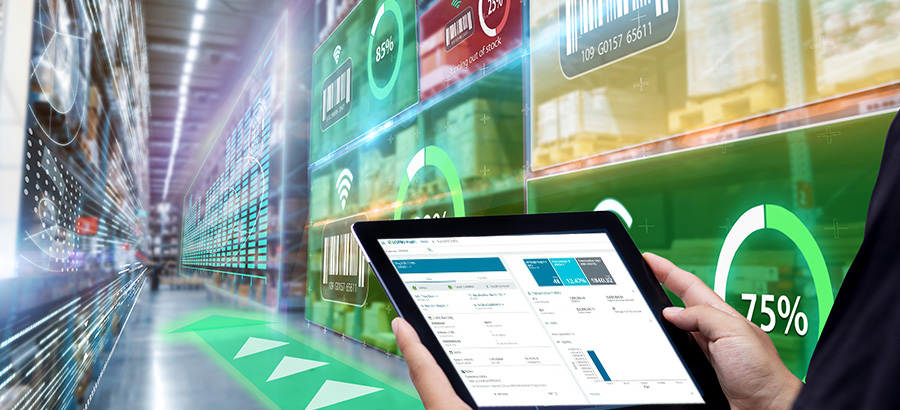The pace of technological change has been accelerating in recent years to the extent that it now impacts a wider range of people throughout an organization. These potentially disruptive changes have moved from an infrequent inconvenience to a consistent stream of change that is redefining markets and entire industries. In the era of Industry 4.0, IT and business decision-makers need to start embracing emerging technologies that will provide a competitive edge for their business into the future. Part of the solution is to have an ERP system that is already set up for the future and which can offer the capabilities and information needed for digitalization – enabling the digital transformation process.
But where do you start?
Here are the steps to guide you along the digitalization journey.
1. What does digitalization mean for your business
Start by reviewing the technological developments and competitive pressures in your industry sector, together with the rate of change. How will this impact you in the short and long term? What future technologies do you need to consider?
- Business Intelligence
- Artificial intelligence (AI)
- Machine learning (ML)
- Cloud computing
- Industrial Internet of Things (IIoT)
- Chatbots (intelligent assistants)
2. How ready is your organization
Firstly, is your organization ready to be an early adopter, a fast follower, or a follower?
To determine this, start by knowing what is on your factory floor – digitalization starts from there. Many manufacturers have machines that cannot collect and transmit the data needed to support a digitalization initiative and they will need to be modified or replaced.
Another aspect of your factory investigation is to identify how people on the floor collect and use information. In many cases, analog devices are still used to collect information about staff activities on the factory floor, and these will need to be changed.
You also need to assess how other departments receive and use production data, and if the systems they use will enable digitalization to be implemented throughout the organization.
3. What information do you need
To digitalize your shop floor, you may not need a full-blown Manufacturing Operations Management (MOM) or Manufacturing Execution System, but you will need to integrate information from various machines, as well as data from people and related processes.
If you are considering using devices to take advantage of IIoT, you will need to invest in cloud infrastructure and monitor the devices, and to provide a data collection store for the data before it is passed on to your in-house systems.
In order to connect a range of disparate systems and leverage the data from them, you will require middleware to collate and translate the data before it is integrated into your ERP.
That is when a future-fit ERP system can be a major advantage. It enables you to plug-in components such as a MOM system when your business is ready, and automates the collection of data from various sources and orchestrates the flow of information to all parts of the business.
At the customer-facing points of the organization, there is a growing preference among customers to have self-directed interactions with chatbots. Using an ERP application that includes chatbot functionality fast tracks the incorporation of this capability into your customer service process.
4. How will you make use of the information
Digitalizing your business will result in the generation of large amounts of data. How can you use all the data effectively and still be efficient?
An ERP system that includes various tools for reporting and analysis is important in allowing people to make decisions based on data. But people can only do so much and may not pick up some critical factors. Increasingly, organizations are looking to AI and ML to help identify trends and anomalies, and predict future events or problems. For example, in procurement, AI can assist in strategic sourcing and supplier risk monitoring, as well as identifying potential fraud in payments.
However, it’s not enough just to have AI doing its work, you may need to ensure that staff get notifications and the tools to enable them to take immediate action. That’s where software with a social-media type functionality can help by pushing information to people without them having to search for the information.
You can acquire point solutions to achieve these results, however, if you have an ERP system that already offers this built-in functionality, you can simply switch them on, as and when you are ready to use them.
5. Ensure governance and compliance
Unless managed properly, digitalization projects can generate process and data problems. On the data side, it is important to ensure that foundational data is cleaned up. If corporate data is not relevant, accurate or up-to-date, any resultant decisions or forecasts are not going to produce good results.
How the data is routed and applied to support business processes is another aspect that will affect the positive outcome of the project.
Because a digitalized organization will have a lot of data moving around, another aspect of governance is ensuring data security and integrity. Weak points may be when data is being transferred, say between machines and the data collection stores. This can be overcome by putting data rules, access controls and authorizations in place, functionality that should be available with your chosen ERP solution.







